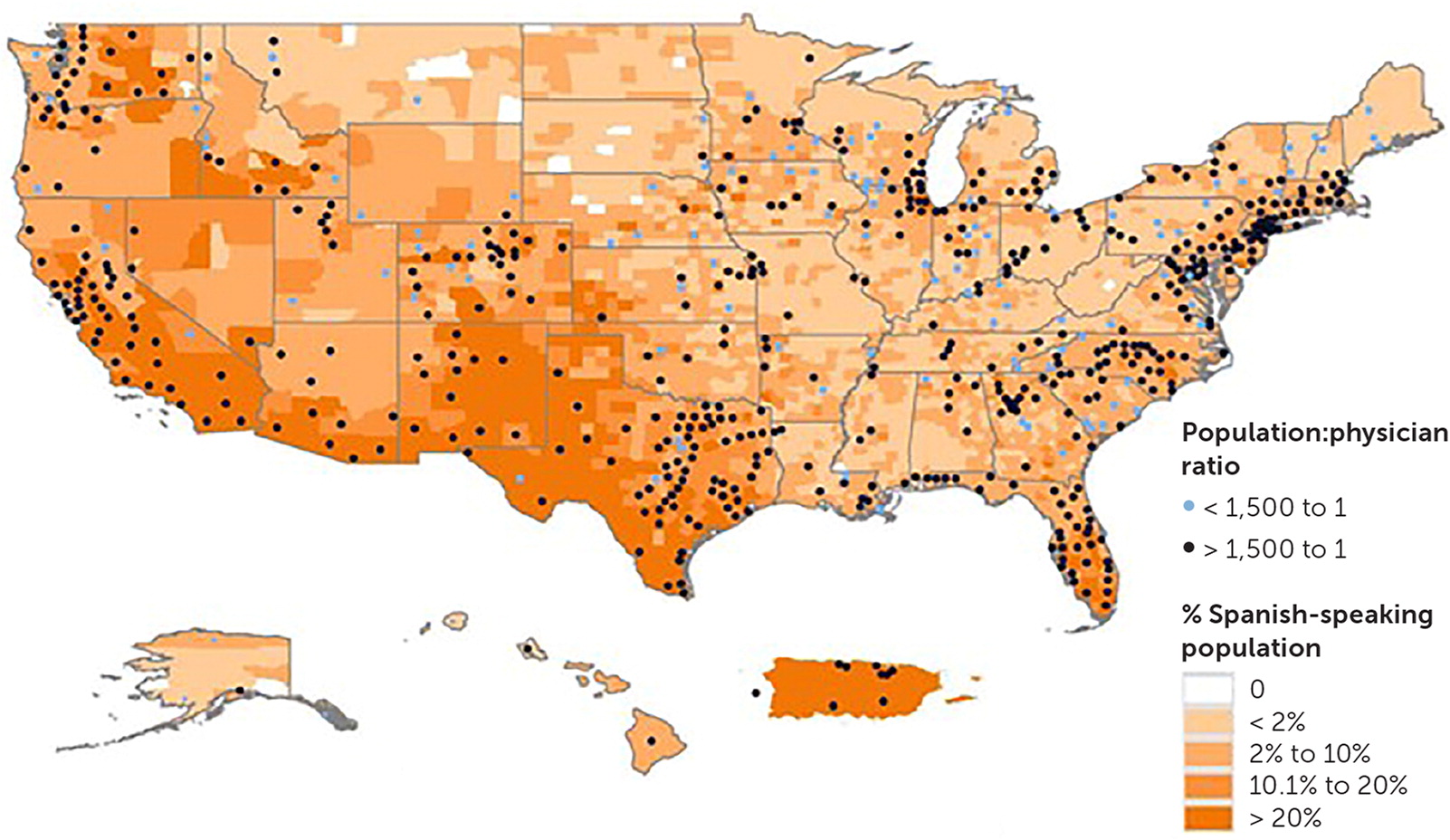
Am Fam Physician. 2022;105(6):654-655
Author disclosure: No relevant financial relationships.
Language concordance between physician and patient is important in providing high-quality care. Many counties in the United States have a disparity between the number of patients speaking Spanish and the number of family physicians who are able to provide care in Spanish. Family medicine training institutions should consider how to modify curricula and recruitment of medical students to meet the language needs of their local populations.
Concordance in the language spoken between patients and their physicians is important. Studies demonstrate that incorporating Spanish language and cultural competency into residency training is beneficial to patient satisfaction and adherence to physician recommendations.1 Spanish is the second most commonly spoken language in the United States, with 12.8% of the total population speaking Spanish at home.2 Our objective was to characterize the geographic distributions of Spanish-speaking family physicians and Spanish-speaking patients in the United States.
Using data from the American Board of Family Medicine from 2013 through 2019, board recertifying and first-time certifying family physicians who self-identified as Spanish speakers (22%) were identified and mapped (Figure 1). Then, using American Community Survey data, counties were stratified by the percentage of Spanish-speakers residing in each county. A population-to-physician ratio of 1,500: 1 was chosen as the standard by which to measure whether an adequate ratio of Spanish-speaking family physicians to the local Spanish-speaking population was present. Based on this threshold, there are inadequate numbers of Spanish-speaking family physicians serving in many U.S. counties where high proportions of the population speak Spanish. We found that in 222 counties where more than 20% of the population speaks Spanish, none had Spanish-speaking family physicians, with the highest populations in Texas and New Mexico. Although physicians who are fluent in Spanish are more likely to practice in geographic areas where more potential patients speak Spanish,3 it appears that a gap remains in the family medicine workforce. We acknowledge that our analysis excludes other primary care clinicians who may be helping to fill this need. As the U.S. population continues to diversify, it is increasingly important to recruit Spanish-speaking medical students to serve Spanish-speaking populations and for Spanish to be taught in medical school and family medicine residency programs.

